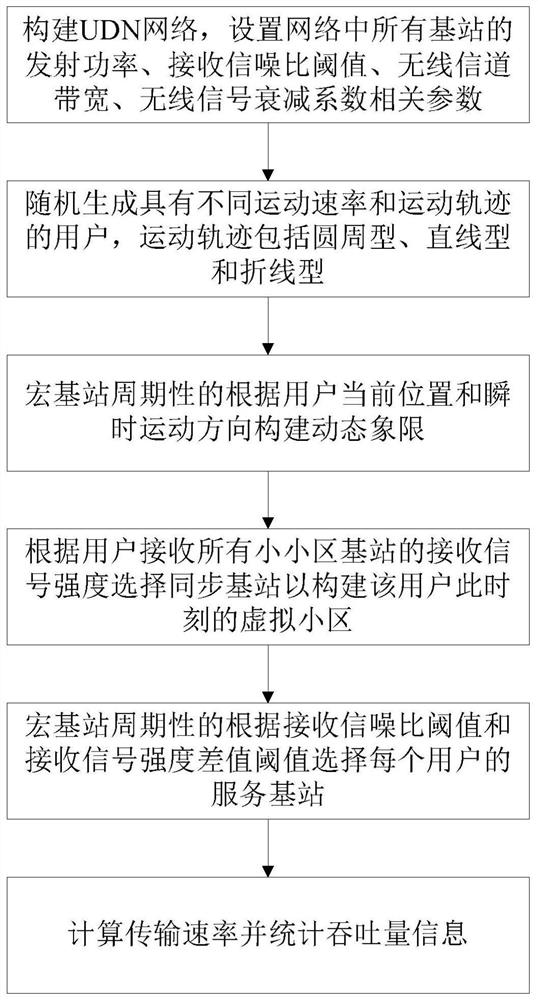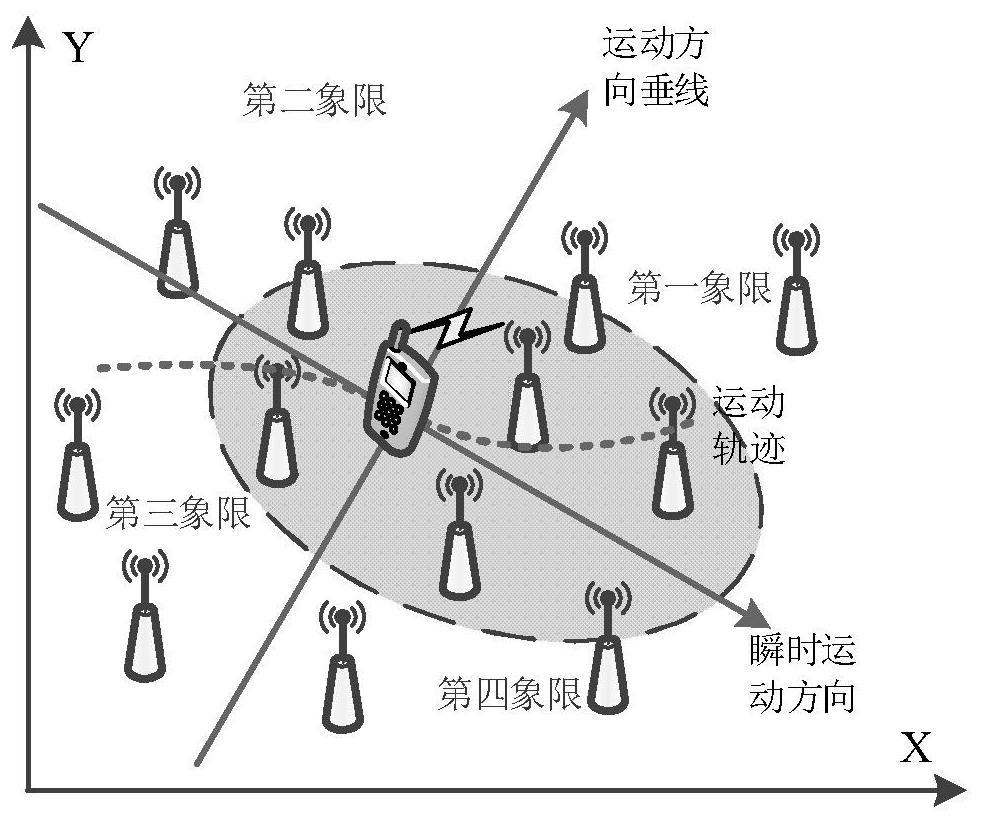A 5G ultra-dense network virtual cell construction method
An ultra-dense network and virtual cell technology, applied in the field of 5G ultra-dense network virtual cell construction, can solve problems such as frequent switching of mobile user service base stations, achieve service support, reduce base station switching frequency, and reduce network overhead.
- Summary
- Abstract
- Description
- Claims
- Application Information
AI Technical Summary
Problems solved by technology
Method used
Image
Examples
Embodiment Construction
[0044] The present invention will be described in further detail below in conjunction with the accompanying drawings and embodiments.
[0045] This embodiment is aimed at 5G ultra-dense networks, such asfigure 1 As shown, the virtual cell construction methods based on dynamic quadrants are respectively designed as image 3 As shown, and cooperate with the serving base station switching method based on the received signal-to-noise ratio threshold and the received signal strength difference threshold, Figure 4a and Figure 4b shown. In this embodiment, 60 small cell base stations complying with the Poisson point distribution are deployed within a geographical range of 300m*300m to provide services for 100 mobile user equipments with a moving speed of 2-15m / s. The user movement trajectory model is randomly distributed in one of the three types of circle, straight line and broken line, such as Figure 5 shown. This embodiment considers Rayleigh fading during wireless signal t...
PUM
 Login to View More
Login to View More Abstract
Description
Claims
Application Information
 Login to View More
Login to View More - R&D
- Intellectual Property
- Life Sciences
- Materials
- Tech Scout
- Unparalleled Data Quality
- Higher Quality Content
- 60% Fewer Hallucinations
Browse by: Latest US Patents, China's latest patents, Technical Efficacy Thesaurus, Application Domain, Technology Topic, Popular Technical Reports.
© 2025 PatSnap. All rights reserved.Legal|Privacy policy|Modern Slavery Act Transparency Statement|Sitemap|About US| Contact US: help@patsnap.com



